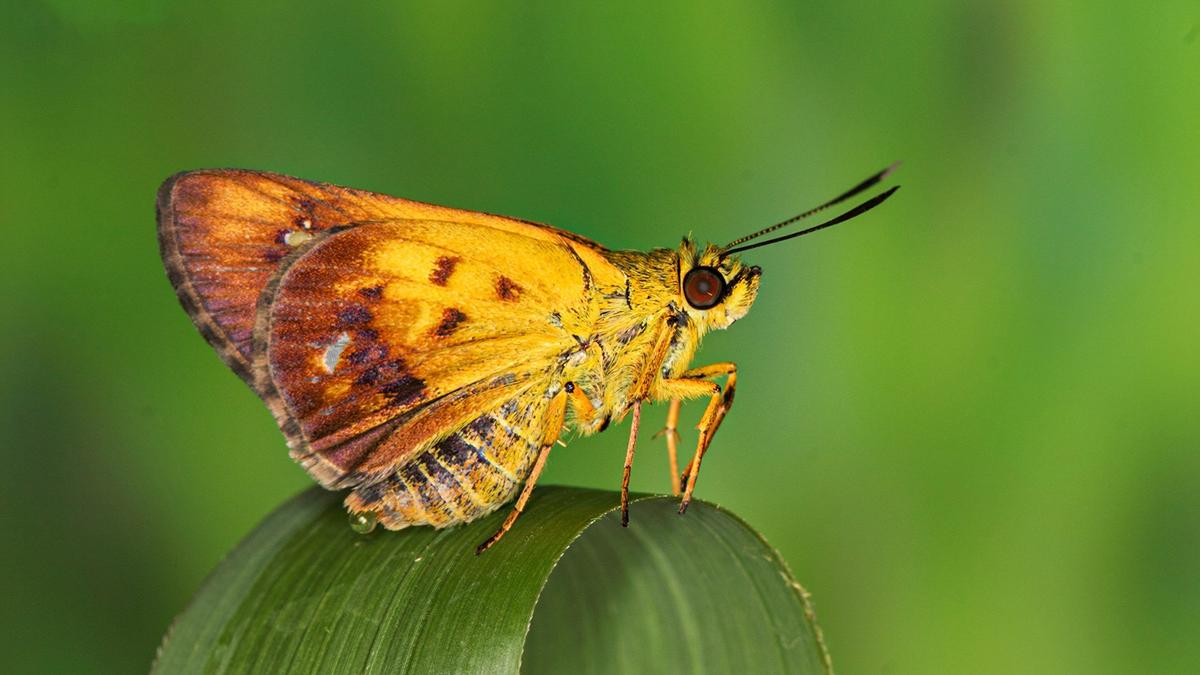Zographetus mathewi, the newly discovered skipper butterfly from the Western Ghats.
A team of lepidopterists have identified a new butterfly species in the Western Ghats, one of the world’s eight “hottest hotspots” of biological diversity.
Named Zographetus mathewi, this newly described skipper butterfly belongs to the family Hesperiidae and adds a new entry to the genus ZographetusWatson, 1893, making it the 15th species in this oriental group and the fifth to be recorded from India.
The species, endemic to the low-elevation forests of Kerala, was identified after the researchers observed larvae feeding on Aganope thyrsiflora (Fabaceae), a leguminous vine. Although initially resembling the widely distributed Z. ogygia, detailed studies revealed key differences in wing venation and genital structure, thereby prompting its classification as a new species.
The species, published in the peer-reviewed journal Entomon, was discovered by scientists from the Travancore Nature History Society (TNHS), the Institute of Tropical Research, Ecology and Conservation (INTREC) Thiruvananthapuram, and the Zoological Survey of India.
“Initially, we thought we had encountered Zographetus ogygia, a known species from Western Ghats,” explained Kalesh Sadasivan, the lead author and butterfly researcher from TNHS. “But detailed morphological and genitalia studies revealed that this was, in fact, a completely new species.”

George Mathew
The new species is named in honour of George Mathew, a renowned Indian entomologist and former Head of the Entomology Division, Kerala Forest Research Institute. Its proposed common name is Sahyadri Spotted Flitter in reference to the Western Ghats, locally known as Sahyadri.
Zographetus mathewi is part of the Zographetus satwa species-group, characterised by unique features such as wing venation patterns and secondary sexual traits, including swollen forewing veins in males. It can be further distinguished by a basal hair tuft on the underside of the forewing, yellow-ochre scaling on the hindwing underside, and distinct genitalia structures in both males and females.
Despite its rarity – only one adult was observed in the wild during years of fieldwork – the researchers found multiple larvae and pupae in forested areas across Kerala, including Kallar, Shendurney, Edamalayar and Nilambur, all below 600 metres elevation. This suggests that while adult sightings are extremely rare, the species may have a broader distribution within the Western Ghats, though it remains endemic to the region.
Published – July 13, 2025 05:05 pm IST





